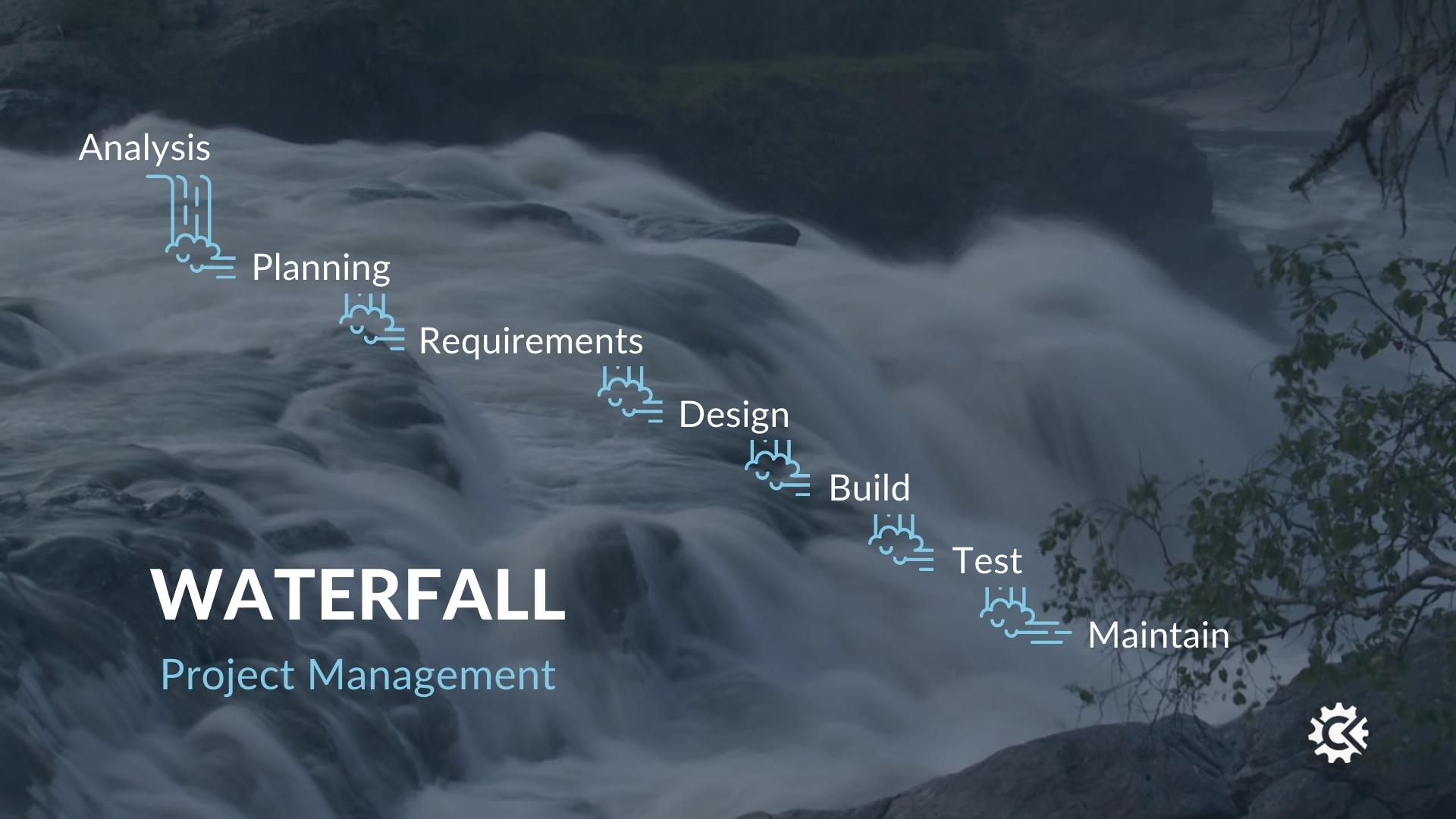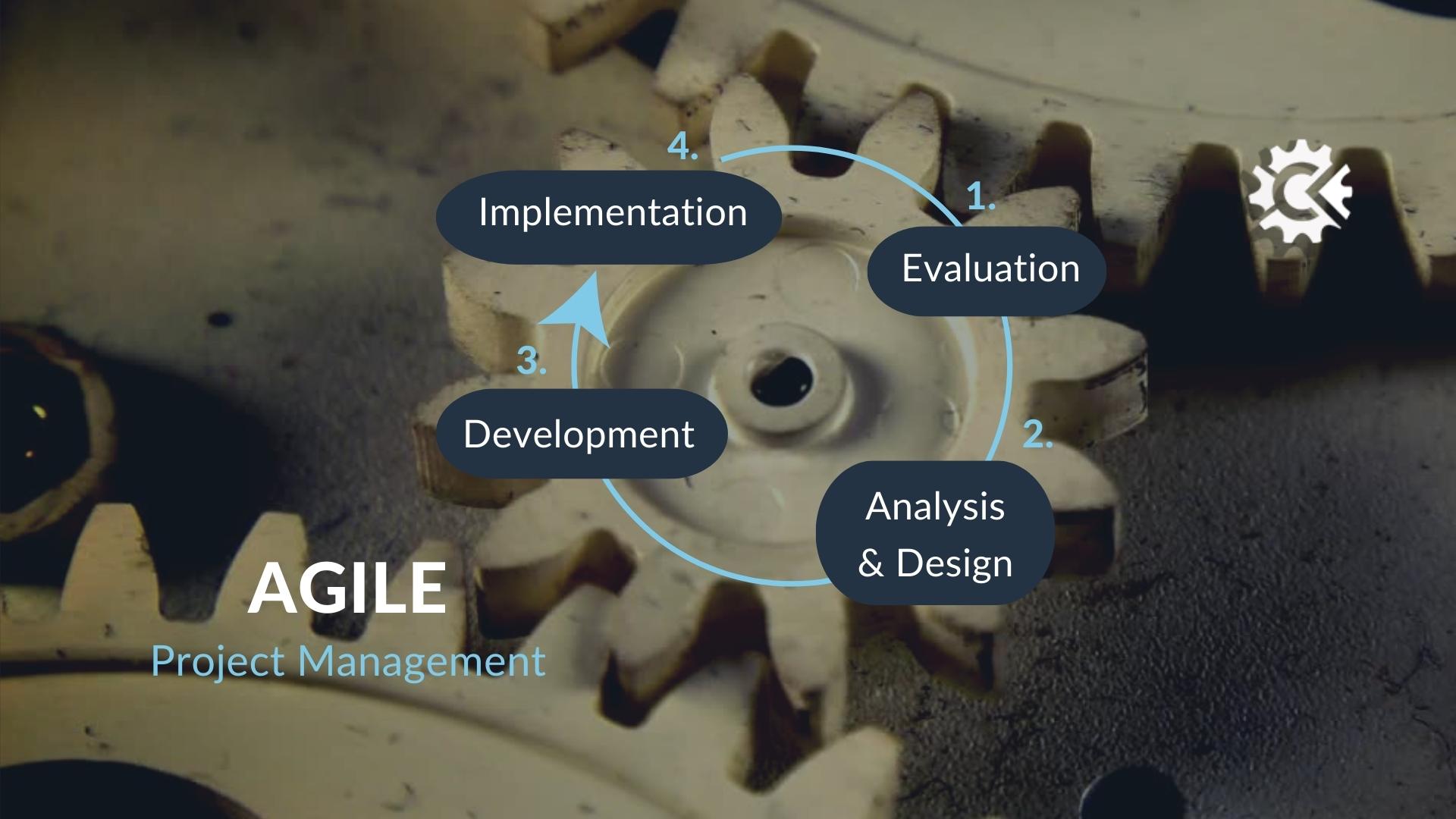Agile, Waterfall and Agile-Waterfall Hybrid Project Management: Characteristics and tips for implementation.
The two most used frameworks for project delivery are Waterfall and Agile. Each has benefits, however, how you apply Waterfall or Agile will depend on the nature of the project and the requirements of your organisation. They can be used either independently or combined in a hybrid Agile-Waterfall project management model.
Waterfall Project Management
The Waterfall project management methodology gets its name from the way phases and tasks are organised and managed, they resemble the linear flow of a waterfall. It follows a sequential process that moves from one project phase to the next.
Waterfall PM is the traditional process of breaking down project activities into linear and sequential phases. Each new phase can only begin when the previous one has been completed.
Typical Waterfall methodology includes phases, such as:
Analysis – Planning – Requirements – Design – Build – Test – Maintain

Figure 1 | Phases of Waterfall Project Management
BENEFITS:
- Defining the project ensures that everyone is on the same page, it helps prevent delays and misunderstandings.
- Mapping out the phases of the project makes it easier for managers to set the resources needed and how they should be used.
- Estimating project costs helps managers identify over-budget activities and rectify before actions carried out.
- Monitoring and controlling allows to spot small problems before they turn into big ones.
- Following the closing processes ensures that all project-related activities are properly recorded. This record can also be very helpful for future projects.
- Applying the Waterfall project management guidelines eliminates the need to reinvent the wheel every time you begin a new project.
Agile Project Management
Agile project management is an iterative and adaptive approach to delivering a project throughout its life cycle. In contrast to the Waterfall projects which generally follow a single major release, Agile follows a non-linear flexible process in which user feedback is incorporated in a multi-release approach.
It’s an iterative and adaptive approach to delivering benefits throughout the project rather than only at the end, which allows greater flexibility and considers users’ feedback.
The typical steps that are constantly repeated in Agile project management are:
Evaluation – Analysis & Design – Development – Implementation

Figure 2 | Phases of Agile Project Management
BENEFITS:
- Faster problem detection and resolution.
- Greater flexibility and adaptability to changes
- Resources are used more efficiently and deployed faster.
- Enhanced team collaboration.
- Get access to product faster
TIPS TO IMPLEMENT AN AGILE PROJECT MANAGEMENT MINDSE
Agile Project Management is fundamental nowadays to iterative solution delivery. One of the main problems organisations face when implementing Agile methodologies is that they forget that they need to be Agile before doing Agile. This means your leaders need an Agile mindset first before they can successfully drive adoption in your organisation. To drive this transition to Agile Project Management, there are a series of actions that can be considered:
- Establish iterative development: break down big projects into smaller ones.
- Hold daily stand-ups: teamwork is the key to success, therefore meetings are too.
- Use Project Management tools: this will allow you to better structure work and improve team communication.
- Set communication guidelines: ensure that every member of the team speaks the same language in terms of tasks, goals, project standards, etc.
- Visualise workflows: this makes it easier to keep track of tasks and the overall status of the project.
- Limit work in progress: Agile PM aims for constant development, that’s why it breaks down tasks to be completed in shorter periods.
- Allow continuous feedback: to ensure enhancements or new features can be included early in development.
- Test-driven development: to reach the best solution, Agile PM is based on trial and error.
- Small releases: delivering functionality sooner and providing teams with a clear idea of how the final product is coming along.
Agile-Waterfall Hybrid Project Management
As we have seen, Waterfall and Agile project management offer different approaches for different project types, in some cases they can be combined in a hybrid approach giving you access to the benefits each can deliver.
A hybrid approach uses Waterfall to manage strategy, phases and upper-level decision, Agile is used to break of those phases into smaller delivery sprints. A hybrid approach provides stakeholders with the opportunity for involvement in responsive design and development activities and continued improvement feedback loops. The result being product is released faster and benefits realised earlier.
The Agile approach is used at a delivery level, while the Waterfall is at the organisation level. Specific development phases use agile techniques to integrate user feedback and deliver benefits along the established waterfall stages.
Figure 3 | Agile-Waterfall Hybrid Project Management video explanatory
BENEFITS:
- Improves the ability to respond to feedback and changes in a timely manner.
- Allows for greater flexibility while following a secured established path.
- Improves predictability.
- Better team collaboration.
- Sets a general project schema.
HOW TO IMPLEMENT AGILE-WATERFALL HYBRID PROJECT MANAGEMENT
If Agile-Waterfall hybrid PM is the right methodology for your organisation, you need to consider your PM Framework, PPM tools and training requirements to support this. The general steps to follow include:
- Design a scalable PM Framework that describes how an agile-waterfall project management will work in your organisation for your projects. Define how it will be applied to different projects based on sizes, type and complexity.
- Standardise and automate with the help of a PPM tool. A good PPM tool will help your organisation follow a standard process and empower you project team to collaborate, be more efficient and deliver their tasks and projects with clarity.
- Provide training and support so your project teams can adopt the new way of working and work together with the same standards and processes.
- Launch your new PM Framework and Tools.
- The final step… Celebrate! Change is hard, take time to celebrate the wins and celebrate with your team.
We understand it’s not easy to determine which is the best framework for your organisation, that’s why at Consulcad we work with our clients to design and build scalable project management frameworks to meet your unique requirements. Click here to get in touch!

